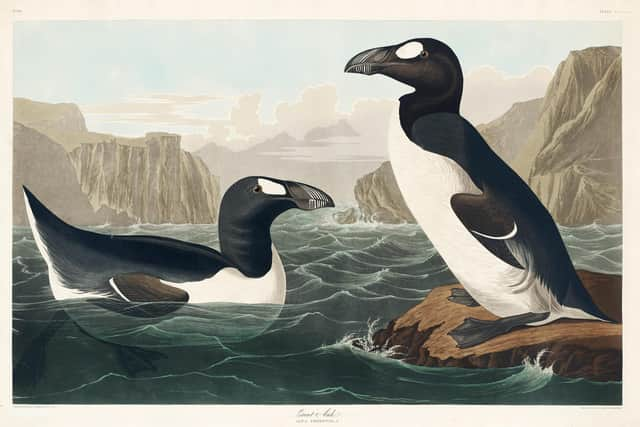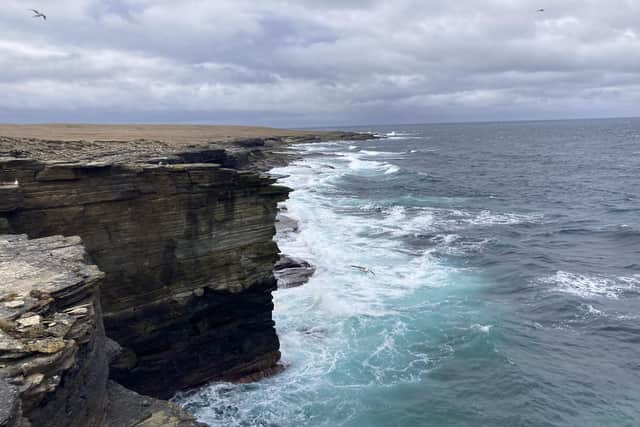Last Great Auk to return to Orkney after 200 years - albeit cast in bronze
The flightless bird, which once lived at Fowl Craig on Papa Westray, has been in the collection of the Natural History Museum since 1819 – the last example of the species from Britain.
The specimen – the King of the last breeding pair in the country – was killed to order in 1813 by islander William Foulis, who was employed by London-based collector William Bullock who later sold it to the Natural History Museum as part of his extensive natural history collection.
Advertisement
Hide AdAdvertisement
Hide AdThe Great Auk has become a symbol of human exploitation of the natural world given its ever increasing rarity made the birds, and their eggs, highly prized by rich Europeans, with their meat and feathers also coveted by hunters.


Now the bird, the only British example of the species in existence, will in some small way be heading home to Papa Westray – with a bronze statue to be cast of the King after the specimen was scanned and 3D-printed by the Natural History Museum.
Jonathan Ford, the island’s ranger, said the new statue would replace an earlier memorial to the bird.
Mr Ford, who ended up relocating to Papa Westray seven years ago after visiting to see the bird’s last nesting ground, said: “There is a memorial to the Great Auk up at North HIll and people are very attached to it – but unfortunately it looks nothing like a Great Auk.


"This will be as close to the original as you can get.
"The last breeding pair lived up at North Hill and Foulis got the King. But nobody would have known then that it was the last pair.
“We are creating a new memorial to the Great Auk as a reminder of what can and is happening to seabird populations around the world. And it is very felt keenly here with the dramatic fall in populations of Arctic terns, Arctic Skuas and Kittiwakes over the last 30 years.
" Folk here have seen those changes and the history of seabirds is being written before their very eyes. Awareness needs to be raised that the harm we continue to do to the seas around us will eventually lead to more extinctions, but maybe this is one we can do something about.
Once considered the “stateliest” of the seabirds, Great Auks were often compared to penguins and measured around 3ft tall with small wings, a hooked beak and black and white markings.
Advertisement
Hide AdAdvertisement
Hide AdTheir slow waddle made them easy prey for hunters, who slaughtered them in huge numbers when they came ashore to breed.
They also made their home in the cold North Atlantic coastal waters off Canada, US, Norway, Greenland, Iceland, the Faroe Islands, Ireland and France.
Fundraising is now underway to raise money for the Papa Westray statue, with a £5,000 donation made by one Orcadian on the mainland.
Although the bird was part of the last breeding pair in the country, the Great Auk became extinct in British Waters in 1840 on St Kilda, where three fishermen beat the bird to death after becoming terrified by superstition that it was a storm-conjuring witch.
A message from the Editor:Thank you for reading this article. We're more reliant on your support than ever as the shift in consumer habits brought about by coronavirus impacts our advertisers.
If you haven't already, please consider supporting our trusted, fact-checked journalism by taking out a digital subscription.
Comments
Want to join the conversation? Please or to comment on this article.
